O graphite is a type of urban art characterized by the production of drawings in public places such as walls, buildings, streets, etc.
It is widely used as a way to social criticism, and, in addition, it is a way of direct intervention in the city, thus democratizing public spaces.
The term graffiti, of Italian origin graffiti - plural form graffiti - means “writing made with charcoal”.
Graphite Origin
If we talk about the beginnings of graffiti, we will have to go back thousands of years, when men made inscriptions in caves. There are examples of interventions carried out in public places from the time of the Roman Empire.
Nowadays, this artistic expression is mainly related to the hip hop, a cultural movement that began in the early 70s in the USA by the Latino, Afro-American and Jamaican communities.
In hip-hop, there are three aspects of art: rap music (song), breakdance (dance) and graphite (mural).

The New York neighborhood of Bronx it was the birthplace of graffiti, where the first drawings were made with spray paint. At that time, young people used street art as a form of protest.
Graffiti in Brazil

The history of graffiti in Brazil emerged in the 70s, precisely in the city of São Paulo. IT IS BORN at a troubled time in the history of Brazil, when the population was silenced by censorship with the military dictatorship in power.
Parallel to the movement that was emerging in New York, graffiti appeared on the national scene as a transgressive art. The language of the street does not ask for permission and screams on the city walls the annoyances of a generation.
From then on, the art of graffiti became an important vehicle for urban communication and contributed to the existence of other voices. Other historical and active subjects now have the chance to participate artistically and politically in the city.
It is important to emphasize that graffiti, initially, was an art characterized by the anonymous author. the graffiti artist - or writter - transformed the city into a support for artistic communication without delimiting space, message or messenger.
Therefore, the concern at that time was the art itself and not the name of its author. For this reason, the so-called "canons" are removed from their central position to make way for an art of everyone and for everyone.
Thus, since the 70s, Brazilian graffiti artists have appropriated the public place in order to transmit political, social, cultural, humanitarian and, above all, artistic messages.
An important name in graffiti in Brazil was the artist Alex Vallauri (1949-1987), considered a precursor of the movement in the country. He used various supports to stamp his art, in addition to the walls and walls of the city. His drawings were simple and objective amidst the urban chaos, making the message easier to understand.
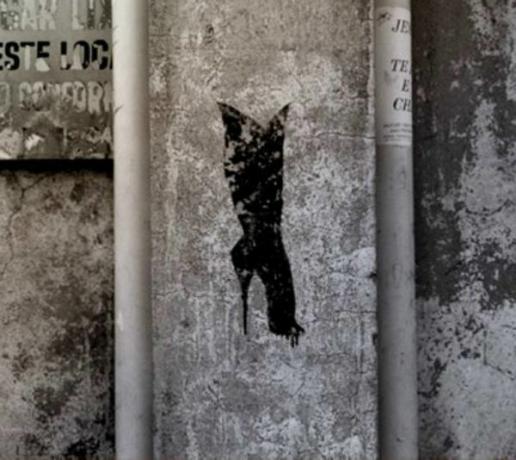
At that time, art is not only seen inside museums or cultural centers, but also on the walls of the streets, tunnels and buildings in the city.
Indeed, graffiti is defined as more than an artistic language, it thus becomes an important instrument of protest and transgression of established values.
This type of expression enabled communication between city dwellers, the union of many cultures that coexist; in other words, it facilitated the fusion between the center and the periphery.
In Brazil, this art quickly spread throughout the country and, nowadays, according to scholars on the subject, Brazilian graffiti is considered one of the best in the world.
Graphite Representatives
Check out some prominent names in the national and international graffiti scene.
Keith Haring (USA)
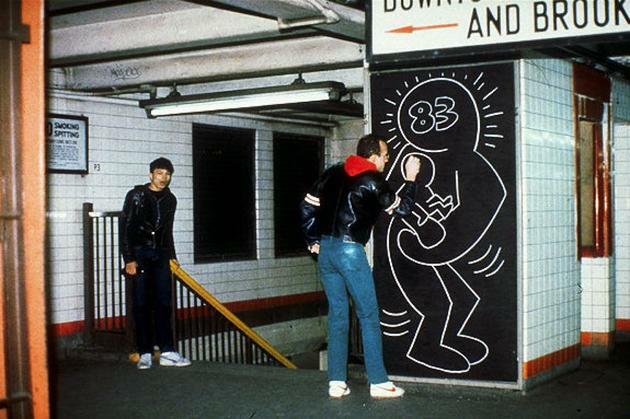
American artist and activist who was born in 1958 in Pennsylvania. With extensive production in the 1980s, he contributed a lot to the graffiti movement.
Avowedly homosexual, Haring contracted AIDS and died in 1990, at the age of 31.
Banksy (England)
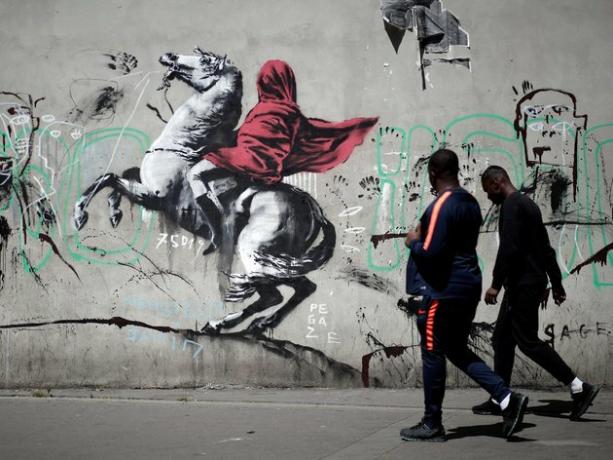
Banksy is a street artist and political activist who was born in England in 1974.
His works are generally produced using the stencil technique (cast mold) and found in Bristol, London and in many other parts of the world.
Banksy's identity is unclear, but it is speculated that it is musician Robert Del Naja.
The Twins (Brazil)

The brothers Otávio and Gustavo Pandolfo are known as "Os Gêmeos". They were born in São Paulo in 1974 and started painting in 1987.
They are very recognized in the country and also internationally, having works in the United States, England, Germany, Greece, Cuba, among other places.
Eduardo Kobra (Brazil)
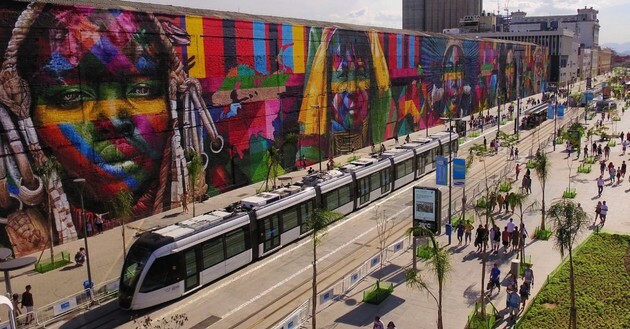
Eduardo Kobra is an artist from São Paulo who was born in 1975. At the beginning of his career he was a graffiti artist, then a graffiti artist and today he considers himself a muralist. He develops large-scale works.
your work Native Peoples of 5 Continents, in Rio de Janeiro was elected the largest graffiti in the world, with 15 meters high and 170 meters wide.
Negaburger (Brazil)

Evelyn Queiróz, from São Paulo, denounces the various oppressions experienced by women through graffiti and other types of art.
In an interview, she stated about her art:
All judgment about the female body is lack of love and respect for others, so that's what I most want to communicate.
Lady Pink (Ecuador)
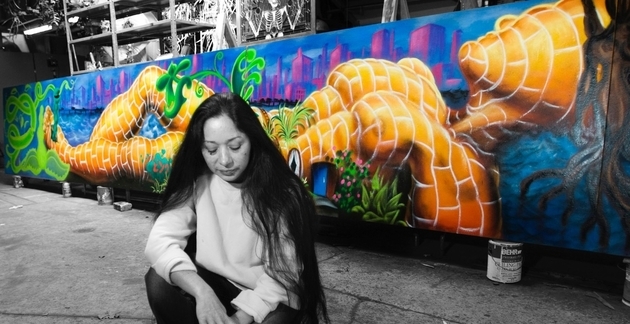
Sandra Fabara was born in 1964 in Ecuador and grew up in the American neighborhood of Queens. When she started her artistic career-in 1979-she went on to adopt the name Lady Pink.
She is one of the first women in the hip hop movement in New York.
Read more about:
- Popular culture
- Types of Art
- Naive art


